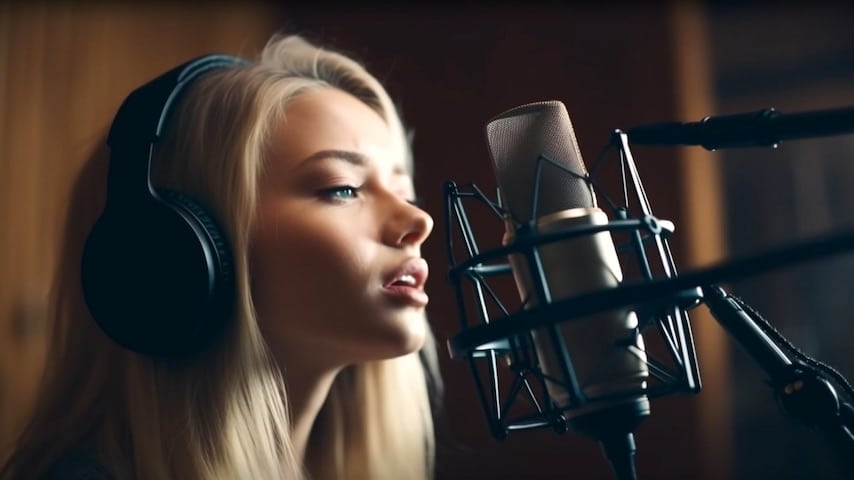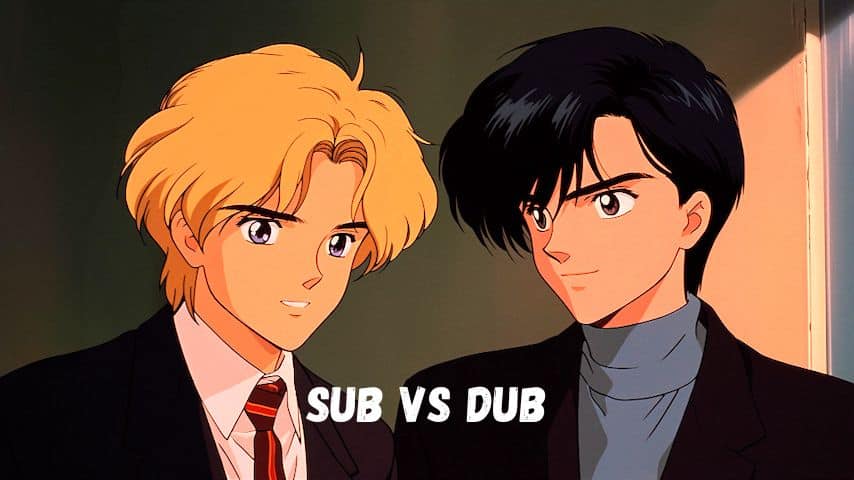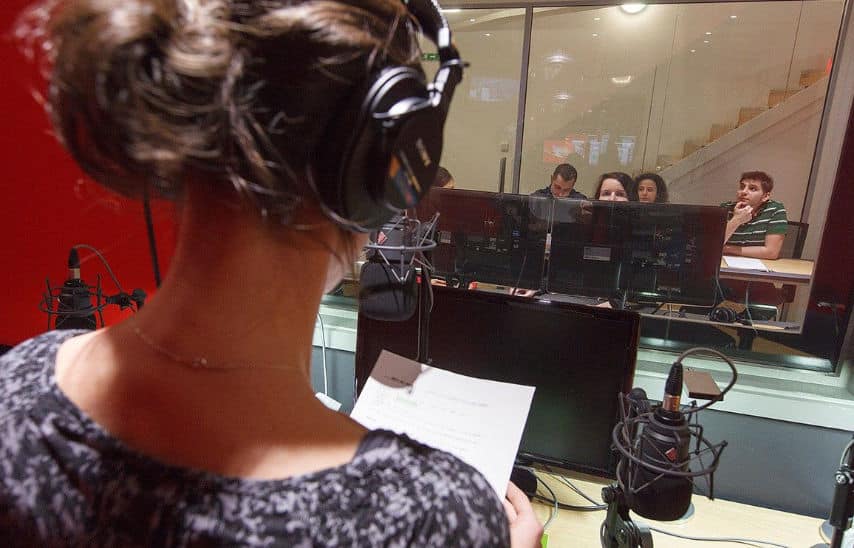In the realm of documentary filmmaking, the power of voice over cannot be overstated. It is the unseen narrator, a guiding voice that not only tells the story but also shapes the audience’s perception and understanding. From the gripping tales of nature documentaries to the in-depth exploration of historical events, voice overs bring a unique depth and dimension to the visual narrative. This auditory element transforms the viewing experience, creating a resonating impact that lingers long after the credits roll.
In this intricate art form, the choice of voice, the nuances of its delivery, and the harmony it creates with the visual elements are critical in crafting a compelling documentary. The voice over is not just about narrating facts; it’s about conveying emotions, setting the tone, and sometimes, becoming the soul of the documentary itself.
Amidst this fascinating backdrop, GoLocalise emerges as a notable voice over agency. With their profound expertise in documentary narration, they have mastered the art of matching the perfect voice to each unique story. Their approach goes beyond mere narration; they breathe life into words, creating a seamless blend of audio and visual storytelling that captures the essence of each documentary. This expertise has positioned GoLocalise as a go-to source for filmmakers seeking to elevate their documentary projects with professional, impactful voice overs.
As we delve deeper into the world of documentary voice overs, we will explore various techniques, understand their impact, and gain insights from experts in the field. This journey will not only enlighten aspiring narrators and filmmakers but also offer a new perspective to enthusiasts who cherish the art of documentary storytelling.
Table of Contents
ToggleHow to Do Voice Over for Documentary
Preparation and Scripting
The journey to a compelling documentary voice over begins long before a single word is recorded. It starts with meticulous preparation and scripting, two crucial components that lay the foundation for effective narration.
Preparation: This initial step involves a thorough understanding of the documentary’s subject matter. Narrators must immerse themselves in the context, background, and nuances of the topic. This deep dive aids in grasping the documentary’s essence, allowing the voice over to resonate more authentically with the audience.
Script Analysis: Once the groundwork of understanding is laid, the next step is script analysis. A well-crafted script is the blueprint for successful narration. It dictates the pace, tone, and emotional flow of the voice over. The narrator, along with the director and writer, collaborates to refine the script, ensuring it aligns perfectly with the visual narrative. Key elements like pacing, emphasis on certain segments, and pauses for dramatic effect are carefully considered during this stage.
The script is not just a collection of words; it’s a narrative tool that guides the voice over artist in conveying the right emotions and nuances. It’s essential for the script to be clear, concise, and reflective of the documentary’s tone, whether it’s solemn, informative, or awe-inspiring.
Voice Selection and Recording
Once the script is finalised, the focus shifts to selecting the perfect voice and the intricate process of recording.
Voice Selection: The choice of voice is pivotal. It must align with the documentary’s theme and the intended impact on the audience. Factors like the narrator’s tone, pitch, and style are critical considerations. A documentary about wildlife, for instance, might require a voice that conveys wonder and excitement, while a historical documentary might benefit from a more measured and authoritative tone.
The selection process often involves auditions where various voice artists showcase their compatibility with the script. This is where agencies like GoLocalise play a crucial role, offering a diverse pool of talented narrators, each bringing their unique flair and expertise.
Recording: The recording process is where technical precision meets artistic expression. It’s not just about reading lines; it’s about breathing life into them. Voice over artists must modulate their voice to match the ebb and flow of the documentary’s narrative.
The recording is typically done in a professional studio environment, where every aspect, from acoustics to the quality of the microphone, is optimised for clarity and impact. The narrator works closely with the director and sound engineer, taking feedback and making adjustments to ensure that the voice over perfectly complements the visual content.
Through this meticulous process of preparation, scripting, voice selection, and recording, the voice over becomes an integral and powerful part of the documentary, enhancing the storytelling and engaging the audience on a deeper level.
Famous Documentary Narrators
Highlighting Icons
The world of documentary narration has been graced with voices that have not only narrated stories but have become synonymous with the genre itself. Among these iconic figures, two names stand out for their distinct and impactful narration styles: Sir David Attenborough and Morgan Freeman.
Sir David Attenborough: Renowned for his work in nature documentaries, Sir David Attenborough’s voice has become almost emblematic of wildlife and environmental storytelling. His style is characterized by a warm, engaging tone, coupled with a sense of wonder and curiosity that seems to echo the marvels of the natural world he describes. Attenborough’s narration goes beyond mere description of the visuals; it’s an invitation to viewers to appreciate and ponder the intricacies of nature. His ability to convey complex scientific concepts in an accessible and captivating manner has made his documentaries not only informative but also deeply moving. This unique blend of enthusiasm, clarity, and a profound respect for nature contributes to the lasting impact of his narrations.
Morgan Freeman: Morgan Freeman, with his distinct, resonant voice, has lent his narration to a variety of documentaries, most notably in works like the “March of the Penguins.” Freeman’s voice, characterized by its deep, smooth, and authoritative tone, has the unique ability to add gravitas and solemnity to the narratives he presents. His pacing and intonation bring a sense of thoughtfulness and introspection, inviting viewers to engage more deeply with the subject matter. Freeman’s narration style is often perceived as comforting and reliable, making complex or emotionally heavy topics more approachable for the audience.
Both Attenborough and Freeman exemplify the profound impact a narrator can have on a documentary. Their voices do more than just guide the audience through the visuals; they add layers of meaning and emotion, enhancing the overall viewing experience. These narrators set a high bar in the industry, showing that a great voice over artist can become an integral part of the documentary’s identity.
The styles of these iconic narrators highlight key elements essential in documentary narration: the ability to connect with the audience, the skill to convey information engagingly and accessibly, and the art of enhancing the emotional and intellectual depth of the documentary. Aspiring narrators and documentary filmmakers can learn much from studying these masters, understanding how their distinctive approaches to voice over have left an indelible mark on the genre.
The Role of Voice Overs in Documentaries
Exploring the ‘Why’
Voice overs in documentaries serve a multi-faceted role, extending far beyond the mere act of providing information. They are an essential tool in the storyteller’s kit, used to weave a narrative that is both engaging and informative. The role of voice overs can be explored through three key aspects: storytelling, context provision, and emotional enhancement.
Storytelling: At its core, a documentary is a story about real life. The voice over serves as the narrator of this story, guiding viewers through the unfolding events, ideas, or phenomena. A skilled voice over artist can transform a series of images or scenes into a coherent and captivating narrative. This narrative thread is crucial in documentaries, where the story might not be immediately apparent from the visuals alone. The voice over can draw connections, highlight themes, and create a narrative flow that engages the audience and keeps them invested in the documentary’s message.
Providing Context: Documentaries often delve into complex, unfamiliar, or intricate subjects. Voice overs provide the necessary context to understand these topics. They offer background information, explain jargon, and provide insights that might not be evident from the visuals alone. This contextual layer is vital in making the documentary accessible to a broader audience, allowing viewers of varying backgrounds and knowledge levels to appreciate and understand the subject matter.
Enhancing Emotional Impact: The emotional tone of a voice over can significantly influence the viewer’s emotional response to the documentary. A well-delivered voice over can evoke empathy, curiosity, shock, or awe, adding depth to the visual experience. The voice’s tone, pace, and inflections can underscore the emotional undercurrents of the documentary, whether it’s the awe-inspiring beauty of a natural landscape, the poignant struggles of a historical figure, or the urgent call to action on a social issue. This emotional resonance is what often makes a documentary memorable and impactful.
Voice overs in documentaries are not just a narrative tool but a vital component that shapes the viewer’s experience. They transform the documentary from a collection of scenes into a compelling, informative, and emotionally resonant story. The voice over’s ability to narrate, contextualise, and emotionally engage makes it an indispensable element in the art of documentary filmmaking.
Crafting Engaging Documentary Narration
Techniques for Impactful Narration
Creating engaging and impactful documentary narration involves a blend of technical skill and artistic expression. The effectiveness of a voice over largely depends on how well these elements are executed. Here are some key techniques that contribute to effective documentary narration:
1. Pacing: The rhythm and speed of the narration play a critical role in how the information is received and processed by the audience. Pacing can vary depending on the content and mood of the documentary. For instance, a faster pace might be used to convey excitement or urgency, while a slower pace can be more reflective, allowing viewers time to absorb and contemplate the information being presented. Good pacing maintains the audience’s interest and keeps them engaged without overwhelming them.
2. Tone: The tone of the narration should align with the theme and mood of the documentary. It sets the emotional backdrop against which the story unfolds. A serious, somber tone might be appropriate for a documentary dealing with heavy or dramatic subjects, while a lighter, more conversational tone could suit documentaries with a more uplifting or educational focus. The narrator’s ability to adapt their tone to suit the content is crucial in maintaining the documentary’s overall coherence and impact.
3. Emotive Expression: The narrator’s ability to express emotions through their voice can significantly enhance the documentary’s impact. This involves varying vocal inflections to convey different feelings and moods, making the narration more engaging and relatable. Emotive expression helps in building a connection with the audience, drawing them into the narrative and making them feel a part of the journey. It’s about striking the right balance – being expressive enough to evoke emotions, yet subtle enough to keep the focus on the content.
4. Clarity and Articulation: Clear enunciation and articulation are fundamental in ensuring the audience understands the narration. This is especially important in documentaries, which often convey complex information and concepts. The narrator must be precise and clear in their speech, avoiding mumbling or slurring words.
5. Adaptability: A skilled narrator can adapt their delivery to match the changing dynamics of the documentary. This might involve shifting the narrative style to match different segments of the documentary, such as moving from a descriptive to a reflective tone or adjusting the level of formality.
6. Connection with the Material: For a narration to be truly engaging, the narrator must have a genuine connection with the material. This involves understanding the essence of the documentary and conveying its significance to the audience. A narrator who is emotionally and intellectually invested in the content can add a layer of authenticity and depth to the narration.
Crafting engaging documentary narration is an art that involves a careful balance of pacing, tone, emotive expression, clarity, adaptability, and a deep connection with the material. These techniques, when mastered and applied effectively, can elevate a documentary, making it not only informative but also deeply compelling and memorable.
Final Thoughts
As we conclude our exploration of the rich tapestry of documentary voice overs, we step back to appreciate the profound influence this art form has on the world of storytelling. Each strand, from the meticulous preparation and scripting to the emotive and resonant delivery of a skilled narrator, weaves together to create a narrative that is both enlightening and deeply moving. The voices of icons like Sir David Attenborough and Morgan Freeman remind us that a narrator does more than just speak; they bring a documentary to life, turning it into an experience that engages, educates, and inspires.
This journey through the nuances of documentary narration has not just been about understanding techniques; it’s been a celebration of the power of voice to connect, to move, and to transform. Voice overs in documentaries are not mere background elements; they are the heartbeat of the story, shaping how we perceive and feel about the world around us.
In the world where visual media is ever-evolving, the timelessness of a well-narrated story stands out. As filmmakers, storytellers, and creators seek to make their mark in this domain, the choice of a voice over partner becomes pivotal. It’s about finding a voice that resonates not just with the content but with the hearts and minds of the audience.
Elevate your documentary with a voice that does more than narrate—it transforms. Discover the rich landscape of professional voice overs with GoLocalise, where quality, deep storytelling, and dedication converge. Embrace a partnership that brings your narrative to life, ensuring it’s not just heard, but felt and remembered. Let GoLocalise be the beacon that guides your story to resonate beyond words.
FAQ
What makes a good documentary voice over?
A good documentary voice over should be clear, engaging, and match the tone and style of the documentary. It should enhance the storytelling, provide context, and connect emotionally with the audience.
How do I choose the right voice for my documentary?
Consider the theme and audience of your documentary. Look for a voice that complements the subject matter and resonates with your target audience. Auditions and voice samples can help in making this decision.
What is the process of working with a voice over agency like GoLocalise?
The process typically involves discussing your project needs, selecting a suitable voice artist from their talent pool, script preparation and review, recording the voice over, and any necessary post-production edits.
Can voice overs be done in multiple languages?
Yes, many voice over agencies, including GoLocalise, offer multilingual voice over services, allowing your documentary to reach a global audience.
How long does it take to complete a documentary voice over?
The timeframe can vary depending on the length of the documentary and the complexity of the voice over work. It’s best to discuss timelines with the agency to ensure they align with your project schedule.
How much does a professional documentary voice over cost?
Costs can vary based on factors such as the length of the recording, the language, the experience of the voice artist, and any additional services required. Most agencies provide a quote based on your specific project requirements.
Can I be involved in the voice over recording process?
Absolutely. Many agencies, including GoLocalise, welcome client involvement in the recording process. Clients can be on the line during the session, offering live feedback to ensure the final product aligns precisely with their vision and expectations.
What if I need changes to the voice over after recording?
Agencies generally accommodate revisions. If the changes are due to errors such as mispronunciations by the voice over talent, these are usually corrected free of charge. However, script changes or subjective alterations based on preference are typically subject to re-quoting. To ensure the final product meets your expectations, it’s encouraged to be present during the recording session for immediate feedback.
How do I ensure the voice over aligns with my documentary’s visuals?
Provide the voice over artist and agency with context, such as key scenes or a rough cut of the documentary. Clear communication and collaboration are essential for ensuring alignment.
Why should I choose GoLocalise for my documentary voice over?
GoLocalise offers a blend of experienced voice talent, multilingual options, and a commitment to quality storytelling. They work closely with clients to ensure the voice over enhances the documentary and resonates with the audience.






















